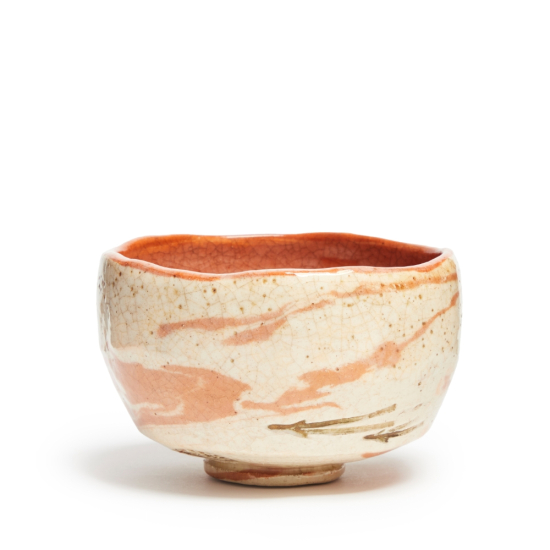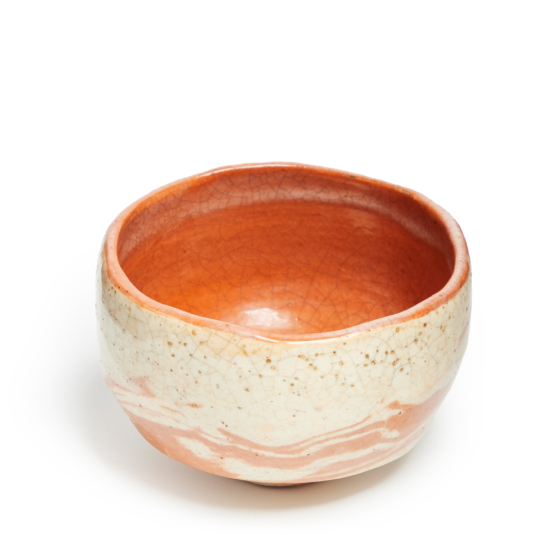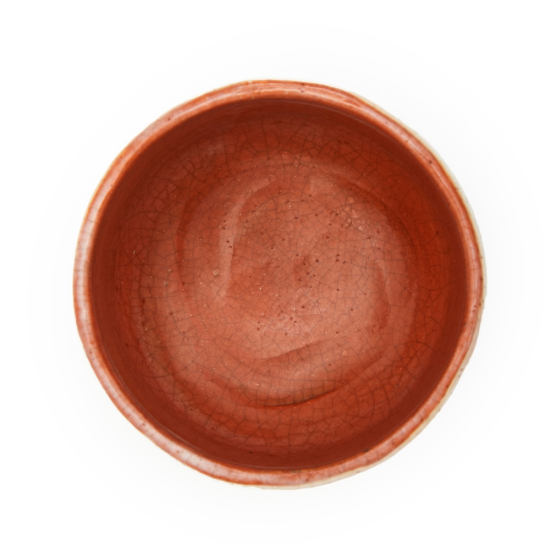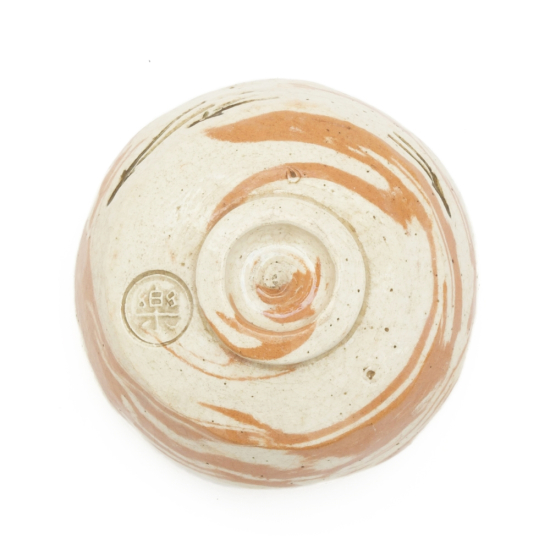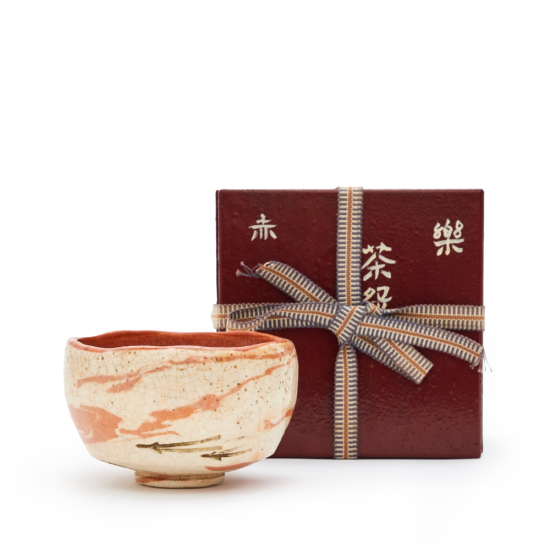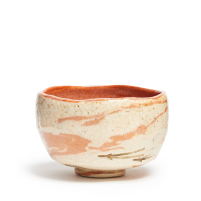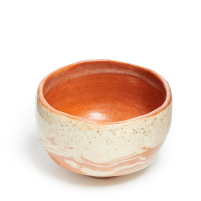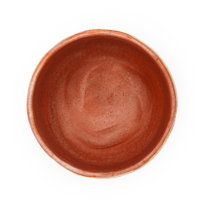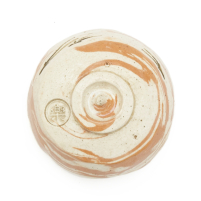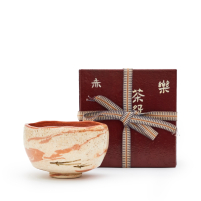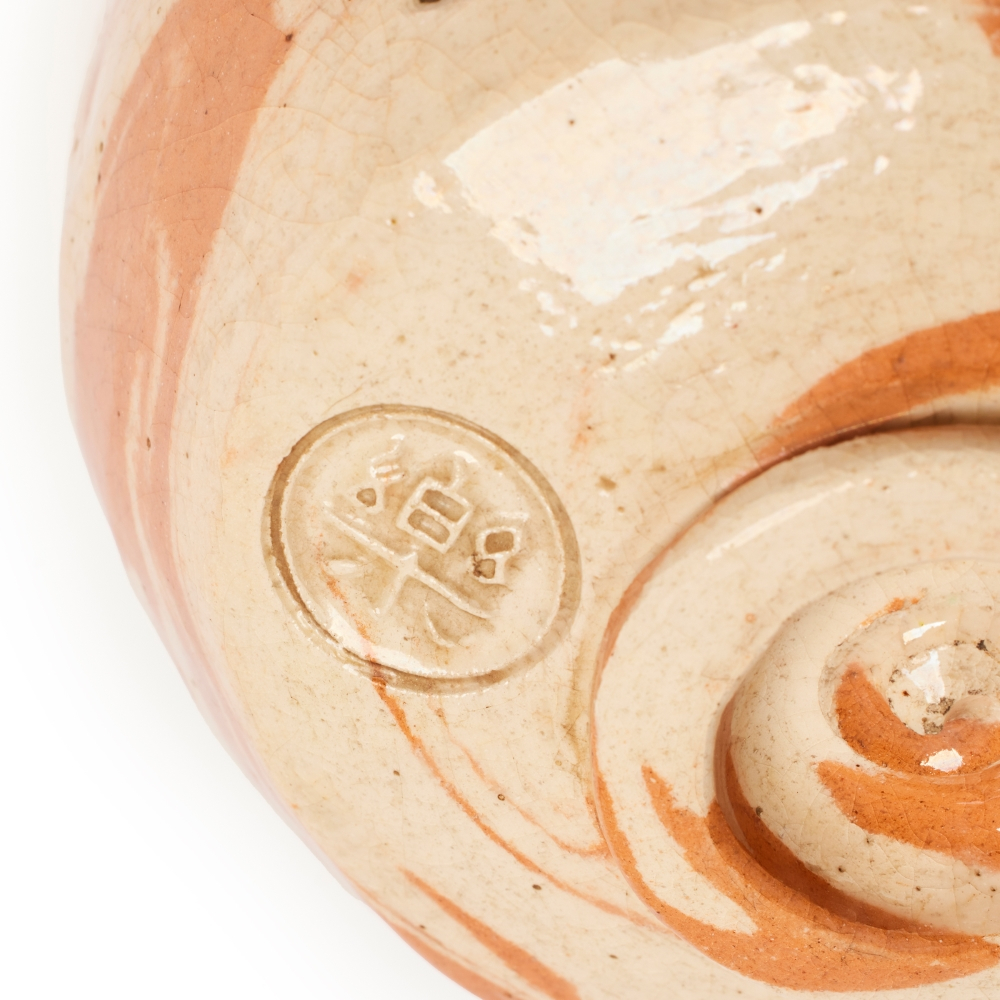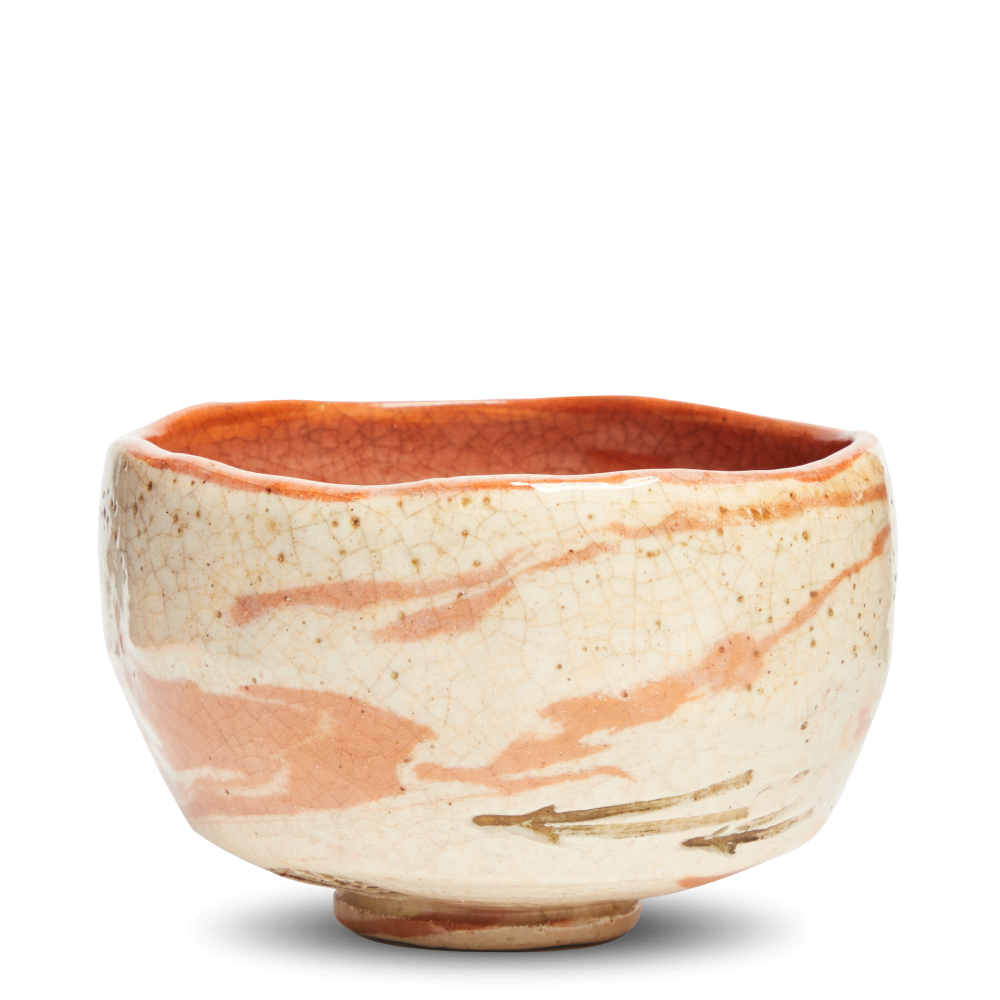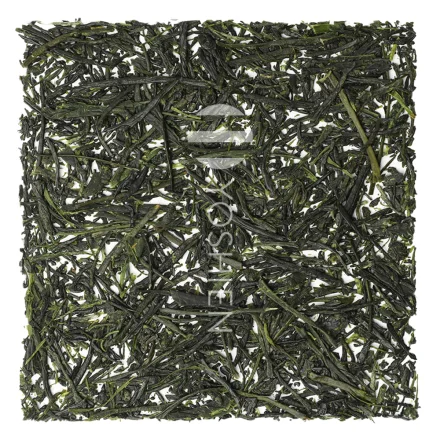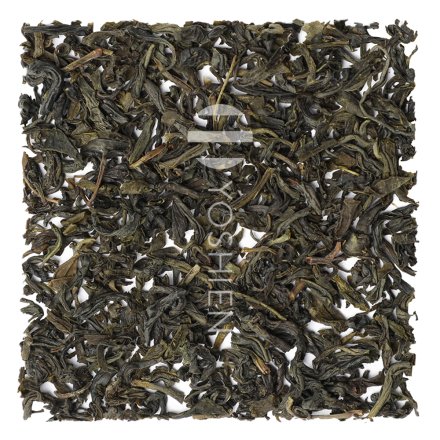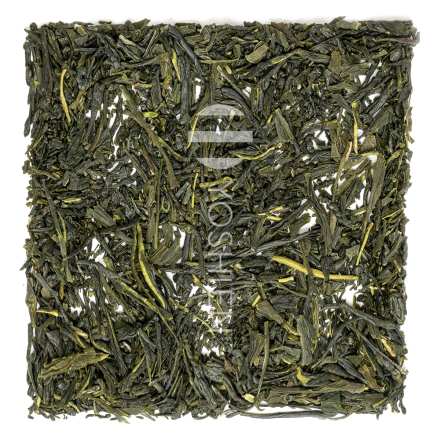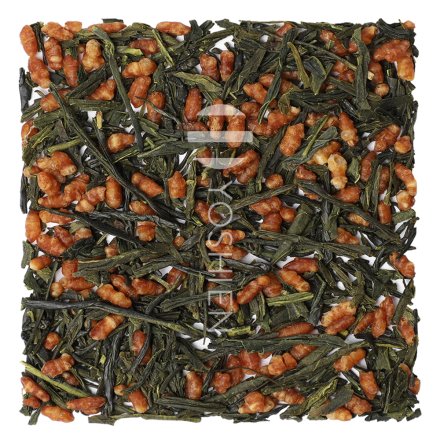Almost exclusively used for tea ceremonies, traditional Japanese Raku is a special type of hand-moulded, lead-glazed pottery that is quick-fired at low temperatures then rapidly cooled in air or water to give it its characteristic soft, warm texture. Designed to reflect the sobriety of the Wabi-cha aesthetic championed by Japanese tea master, Sen no Rikyu, Raku bowls were originally produced, without ornament, in black or red – colours believed to bring out the vibrant green of Matcha most beautifully.
Aka Raku 赤楽
Traditionally, red or Aka Raku is made from iron-rich red clay, coated with a transparent glaze and fired at around 800°C (a little lower than for black Raku), resulting in a light red finish. Nowadays, for a more vivid colour, a high iron, ochre slip may be applied.



